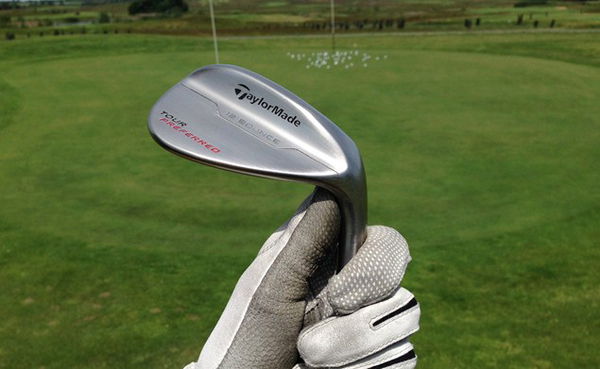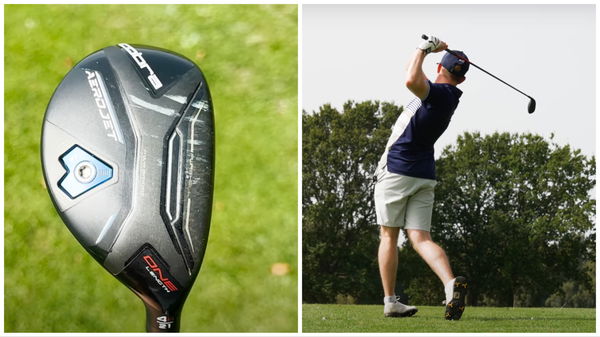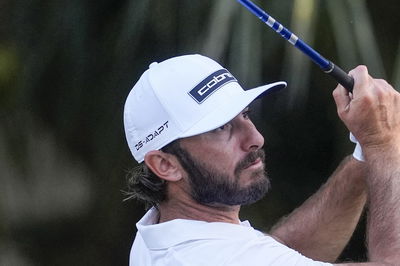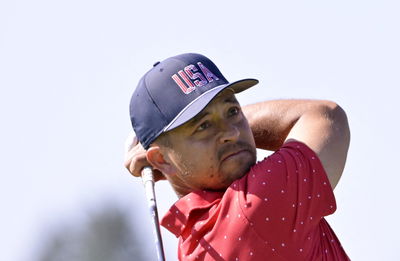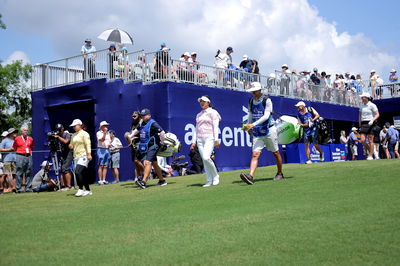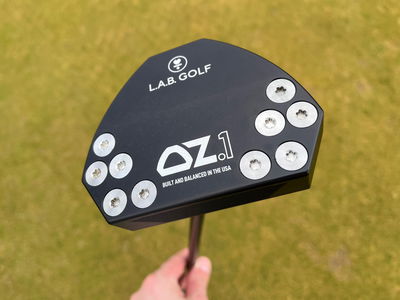Interview: Golf Pride
Golfmagic sits down with Golf Pride's European sales manager Conor Dillon to discuss all things Golf Pride
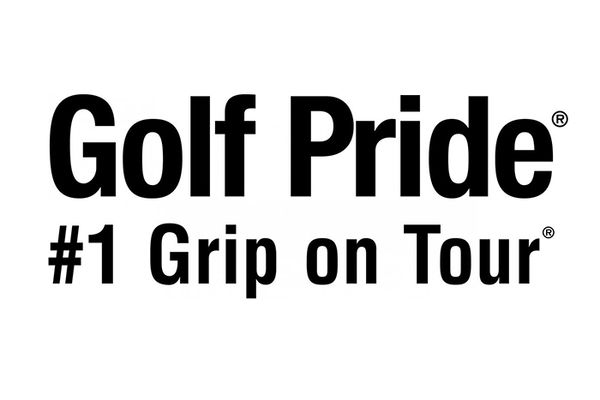
Conor, thanks for taking the time to speak to Golfmagic. Could we start by learning a little bit more of the background to the brand?
Golf Pride was established in 1949 in Akron, Ohio. The name Golf Pride originated from a very popular motor oil called Gulf Pride, and that’s how it all started. Later on, Golf Pride was acquired by Eaton Corporation, which is a $20 billion plus global manufacturing company that has helped with resources and helped us grow through the years.
We were the inventors of the ‘slip-on’ rubber grip that was invented by a guy called Thomas Fawick back in 1953, an industrialist and inventor from Ohio, who also happened to be a golf enthusiast. Fawick, inventor of the pneumatic clutch and brake, came upon the notion that rubber might be a superior alternative to leather for golf grips, by providing a more secure and durable gripping surface.
Golf Pride is the largest manufacturer of golf grips worldwide, with manufacturing, sales and distribution facilities on six continents. We manufacture grips for the likes of PING and Titleist and we’ve been #1 grip on Tour for a long time now. To give you some meat to the stats we have an 84% usage on the European Tour right now. That is testament to the product given we don’t endorse any players. It’s a position I think many other manufacturers would love to be in.
What are the new Golf Pride grips on the market and what makes them stand out for you this season?
There’s a lot of focus on the CP2 this year as it’s the softest rubber we’ve ever produced. It’s a grip that appeals to players who want a comfortable, soft feel without the sacrifice of stability. CP2 features Control Core unique technology which provides much more stability and less taper under the right hand so it’s more parallel going all the way down. CP2, available in both Wrap and Pro version, is the fastest new grip ever for us to win a professional major with Kenny Perry clinching The Regions Tradition earlier this season.
Also we have a brand new rubber formulation Tour Velvet Super Tack grip that will appeal to players looking for a tour-optimised performance with extreme tackiness. The enhanced texture increases surface coverage by 33% for added traction while the distinct diamond pattern in the top section of the grip allows for added stability and reduced torque. The designing of this had a lot to do with the feedback of Tour professionals. This grip took a while to come to market because we wanted to make sure we got it right. It's a stable but tacky grip and has a nice shiny finish to it.
Then we have the New Decade MultiCompound Platinum grip. This grip has had 13 professional wins year-to-date so it’s got off to a great start. The Platinum Series features a grey upper section designed with Golf Pride’s exclusive BCT cord for all-weather control, and high-performance rubber in the lower hand for ultimate comfort and responsiveness.
REVIEW: Golf Pride New Decade MultiCompound Platinum
Could you talk us through the Interactive Grip Selector on the Golf Pride website?
There are a number of key elements to consider when it comes to selecting your grips. The golfer’s local PGA professional or golf retailer will be able to offer the best guidance on what size and design will be best suited to the player's game, but the grip selector will also help a player identify which grips will be suited to their personal preferences. It can be viewed on www.golfpride.com/fit and it’s a very user friendly, which is key, with five simple questions to get the golfer on his or her way. If you like a certain feel, Golf Pride gives you piece of mind that you’re using the correct equipment.
How does Golf Pride achieve its continued dominance on Tour, consistently achieving over a 70% Grip usage?
For us, product is extremely important. Without product you cannot dominant or be strong in any market. Obviously the Tour players trust the brand which is great and we continue to give them innovative products. They want the confidence that they are using the best possible equipment available to them. The quality and consistency of our products is big too, which is really a testament to Eaton being experts in global manufacturing. Last year Golf Pride held an 84% usage in Europe and over 80% globally, so it’s testament to our brand that Tour players choose us and we don’t pay anyone to do so.
What technological developments have you seen at Golf Pride over the last five to 10 years?
The material development has improved dramatically. If you look at the MultiCompound with the BCT cord on the top, it’s really a hybrid grip where you have two grips in one. With us at Golf Pride, hands are a sole obsession, so that’s our speciality. We’ve done a lot of research over the years and with the hybrid we’ve come up with the BCT on the top to give the golfer a very good all-weather playing ability and stability with a nice soft feel underneath. It’s a real game changer for us and widely used on Tour.
This year, we’ve had two completely new formulations we’ve not dabbled with before. CP2 is by far the softest rubber grip we’ve ever produced. There was some unknowns going into 2014 as it’s the first time we’ve ever tried it but that really demonstrates the innovative thinking of our company that we’re always trying to push the boundaries as well. There is a lot of technology, as you can see, it’s a softer rubber compound but you can see the stability core. CP2 is 31% softer than any other grip in our range. In addition to the innovative compound we have inserted a 2.5” inner core, which reduces torque by 41%, improving stability and should offer better consistency as a result.
We’ve also tried to push the boundaries with our new Super Tack formulation. The Super Tack is a material advancement and a new formulation we have never used that provides the ultimate tack performance. Innovation is key to our success both on tour and with the consumer.
What sets Golf Pride apart from its competitors?
Innovation but also the manufacturing capabilities gained from Eaton, our $20 billion plus parent company. Whenever you go to one of our manufacturing plants, you can see they’re very professionally done, all the metrics are very high ranking. Eaton has given us a lot of resources we’ve needed through the years, so we’re very highly thought of when it comes to producing golf grips. Golf Pride is the #1 trusted grip worldwide due to consistency of quality.
Have grip aesthetics changed the category?
I’m not sure they’ve changed the category but certainly you do see people wanting to customise with different colour options. Such as the Masters grip we launched earlier this year, it creates some excitement in the market. Although colour and cosmetic design has changed a lot, performance is still our #1 priority. Our MultiCompound family does offer 14 different colour options, however, which is the broadest in our product portfolio. There are many cases where golfers will use four or five different colours in their set.
How important is re-gripping to the casual golfer?
A new grip will provide great feel on top of making your clubs feel new again and providing you with the confidence to score better! Grip pressure, grip size and personal feel are all important factors. Re-gripping is an easy and cost effective way of refreshing your set of clubs. Just like rubber tyres, you need to change them to get the best performance. The grip is the only contact the player has with the golf club so ensuring the player doesn’t grip too tightly as a result of using hard, slick grips is vital for their overall performance. Grip size plays an important role also as our hands are all different shapes and sizes. Ensuring the golfer has the correctly sized grip will help.
How often should the amateur golfer change their grips?
As a general rule of thumb we say once a year or after every 40 rounds. It also depends how much you practice too because hitting 80 or so balls on the range is the equivalent of one round. Grips wear, the ozone will dry out the grips, and the oils from your hands will also affect the grips.
Without naming any names, some Tour players change grips every two weeks, while others, major champions for example, change every six to eight months. It's very much personal preference but we recommend at least once a year or every 40 rounds.
Where does the future lie with grip technology?
We are constantly working on and reviewing new advancements and still believe there is a lot more we can do to optimise performance for both Tour players and recreational players.
Will Golf Pride be launching a ‘Superlite’ style putting grip?
All I can say is we are always looking to bring innovative products to market and putter grips are no different and I know the R&D team has been busy conducting performance tests with Tour players, so stay tuned!
For more information about Golf Pride grips visit www.golfpride.com
